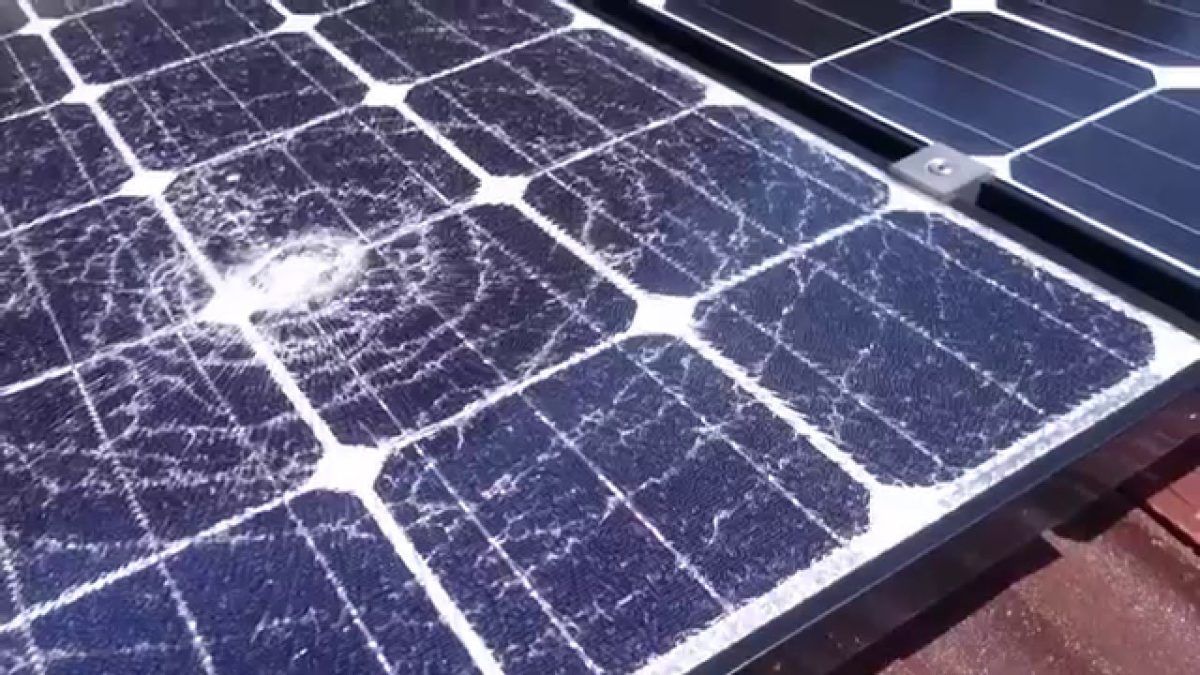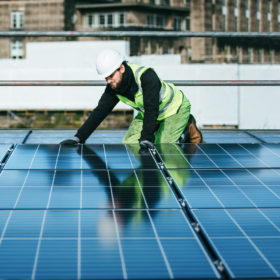In recent years, the commercial landscape for renewable energy assets has been significantly altered by extreme weather events. Solar PV systems have been the most heavily impacted, with an increasing frequency of major loss events and associated insurance claims.
Since 2018, severe weather events in areas with substantial solar deployment such as the northeastern U.S., California and Texas, have prompted insurers to tighten terms and conditions. The result has been a sizable increase in insurance premiums, sometimes by as much as 400%, accompanied by deductible requirements of up to $1 million or 15% of the physical damage limit. More critically, insurance coverages for hail damage have been capped between $15 million and $40 million regardless of project size. Consequently, for large renewable assets with capital expenditures exceeding $200 million, the insured value only represents a fraction of the potential loss.
In addition, natural catastrophe (NatCat) coverages now often include exclusions like microcracking in PV modules. These changes are forcing the solar industry to confront a new reality where obtaining adequate insurance coverage presents a significant obstacle to project viability, and developers may be required to put up additional capital, securities, and/or guarantees to bridge gaps in coverage.
Hail risk
Many locations worldwide experience frequent hail, but only certain areas have historically experienced hail large enough to damage PV modules. In the U.S., severe hail is largely confined to east of the Continental Divide, up to the Great Lakes. In these regions, hailstones can exceed 2 inches in diameter and pose substantial risks to PV projects.
DNV estimates that since 2018, hail-related losses on PV facilities in Texas alone have surpassed $600 million. For instance, in May 2019 the Midway solar project near Midland, Texas, experienced significant hail damage to over 58% of its 685,000 modules, resulting in an insurance claim of ~$70 million. At the Fighting Jays solar farm in Fort Bend County, Texas, a hail event in March 2024 is expected to result in remediation costs reaching hundreds of millions, potentially exceeding 50% of initial construction costs.
Unfortunately, even current best-in-class mitigation strategies like automated hail stow and 1-inch hail resistance tests won’t protect against hailstones larger than 2 inches. To ensure sustainability and financial viability, the solar industry needs a critical reevaluation and enhancement of both technical protective measures and financial risk management practices for solar installations in hail-prone regions.

Loss estimation tools and inaccuracy
Quantifying potential hail-related financial losses for solar assets is crucial for financial planning, financial model evaluation, and determining insurance coverage. Given the complexity, assessing and quantifying potential losses is highly challenging. Risk probabilities used in these assessments vary widely, from near certainty (100%, corresponding to a 1-year return period) to extremely rare events (0.001%, or a 100,000-year return period). Benchmarks are chosen based on the risk tolerance of project owners and investors. The 500-year return period is particularly critical for gauging the extent of potential extreme event losses.
Since 2018, efforts have intensified to quantify the financial impact of hail-related losses across these periods, largely through Probable Maximum Loss (PML) studies to stress-test financial models of assets and portfolios. However, DNV’s reviews suggest these studies may significantly underestimate potential damages, often by a factor of 2 but as large as a factor of 295. This discrepancy typically arises from underestimating hail size for the 500-year return period and by overestimating the effectiveness of mitigation strategies like tracker hail stow position or the resiliency of modules that have passed 1-inch hail tests.
It appears that hail damage at the previously mentioned solar projects exceeded PML estimates by a large margin; these cases underscore the need for a thorough re-evaluation of hail risk assessment. By enhancing the accuracy of PML studies and adjusting risk management strategies, the industry can better ensure the adequacy of insurance coverage and the financial sustainability of solar projects against the risks posed by hail.
Mitigation and financial impacts after loss events
When a solar farm sustains significant hail damage, the repercussions are substantial. The most obvious effects are financial stress from insurance policy deductibles, production losses, and mitigation costs outside of policy coverage, but financial consequences can extend to increased insurance premiums, liquidated damages during operational downtime, costs and fees related to offtake agreements, and legal expenses from litigation by downstream assets and insurers.
The repair process for damaged solar sites is costly and labor-intensive. Disassembling shattered modules and reassembling new ones can require up to three times the effort compared to the original installation. Even modules and equipment that appear undamaged require inspection, testing, and commissioning to confirm functionality.
The financial stability of the project will be jeopardized if project owners are unable to promptly repair damage and restart operations. Tax equity investors and tax credit purchasers who depend on consistent energy production will find their investments at risk. If the project relies on a federal Investment Tax Credit investment structure, tax credits are subject to recapture by the IRS within a 5-year period from the Placed in Service date for the portions of the facility that are not promptly repaired. While insurance firms have introduced products to help mitigate this risk, the impacts from inadequate coverage can be severe.
Risk transfer instruments
Effective commercial risk management and hedging solutions are essential for managing the risks associated with natural catastrophes. A key component is the use of transfer instruments that shift the risk from the project to another party. In addition to insurance policies, these instruments include parametric warranties, long-term service contracts, financial derivatives such as options and catastrophe swaps, event-linked bonds like catastrophe bonds and resilience bonds, captive and self-insurance strategies, insurance-linked loan packages, multi-year insurance policies or bond agreements, reserve funds, and other contingent products. As a testament to their effectiveness, these instruments are already comprehensively applied in mature energy industries such as oil & gas, nuclear, and hydropower.
Parametric warranties and insurance policies offer a way to transfer specific risks to equipment manufacturers or project contractors. For example, if a module manufacturer certifies that their modules can withstand hail up to 2 inches, any damage from hail of this size could be covered under the warranty. This can reduce overall project insurance premiums by transferring frequent, predictable risks to the manufacturer or installer, who are better positioned to manage these risks.
Long-term service contracts with original equipment manufacturers (OEMs) or Engineering, Procurement, and Construction (EPC) contractors are another risk management tool, typically used by the wind industry. These contract structures can also help solar projects transfer operational risks by ensuring that unexpected costs related to equipment failure or operational issues are borne by the service provider.
Catastrophe swaps and event-linked bonds provide financial protection against large-scale natural disasters. By allowing project owners to exchange their risk exposure with another party, potentially in a different geographic location or industry, catastrophe swaps diversify and reduce risk profiles. Event-linked bonds, such as catastrophe and resilience bonds, are designed to raise funds in the event of a disaster. These bonds may defer or forgive repayment obligations if a specific disaster occurs, thus providing immediate liquidity to manage the aftermath of the event. Together, these instruments form a comprehensive toolkit for solar projects to manage and finance the risks associated with natural disasters.
Mitigating operational risk
Despite an expected increase in extreme weather events, project owners can mitigate operational risk through technical hardening measures, and hedge financial risk with accurate loss estimations and innovative risk transfer instruments.
Project stakeholders can negotiate parametric warranties, insurance policies, and long-term service contracts with OEMs, EPCs, and insurers for both operational and pipeline projects. They can discuss financial derivatives, event-linked bonds, and contingent products with their financial teams, and have the option to explore contingent future insurance and credit facilities with insurance brokers and underwriters. At the corporate level, project developers and owners can consider diversifying risk management across various uncorrelated segments of the company, thereby enhancing overall company resilience.
Having a combination of mitigation measures in place—technical measures including hail smart stow strategies, and reinforced PV modules as well as insurance and financial hedges—will allow solar asset portfolios to remain financially bankable, sustainable, and profitable even in locations prone to hail events.

Hamid Gerami is a civil engineer with DNV. As a licensed professional engineer and a CFA candidate, Gerami brings more than eight years of specialized experience in solar project engineering, design, construction, and innovative financing.
The views and opinions expressed in this article are the author’s own, and do not necessarily reflect those held by pv magazine.
This content is protected by copyright and may not be reused. If you want to cooperate with us and would like to reuse some of our content, please contact: editors@pv-magazine.com.








The simple expedient of installing vertically mounted panels on a large scale would mitigate the “gamble” of hail damage. A multi-location operator could partner standard mount solar farms in lower risk geographical areas and hedge their risk exposure. Enhanced solar production during the “shoulders of the day” is a plus.
That picture looks like someone dropped a bowling ball fro 30,000 ft. I am a thermographer and of course where there is damage to a panel has damaged a circuit there will be a hot spot. most of the damage I have seen are between a golf ball and baseball in size. The difference is most of the time the face of the panel looks brand new. The only way you can visually see the damage, and it is very obvious. The only way you can see it is with a FLIR camera. I do surveys and the array doesn’t look like it has a scratch, but with a FLIR camera, it looks like the array has a serious case of the measles. It’s not limited to hail. I have had panels come from China that also look new, but in infrared, they look like a spider’s web. The panels were probably perfect leaving the factory, but thousands of miles of truck and boat rides can do some damage.All it takes is one circuit to be cracked to seriously degrade the performance of the product.